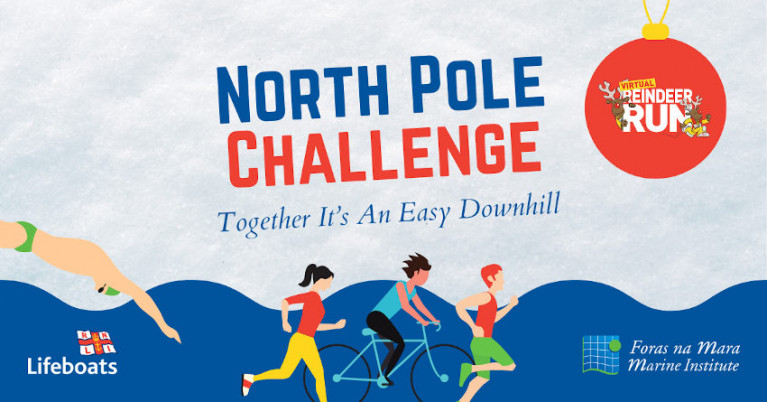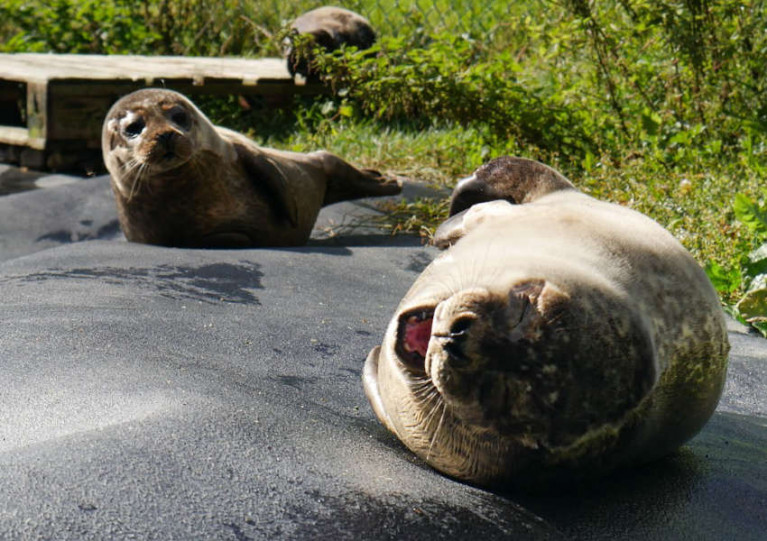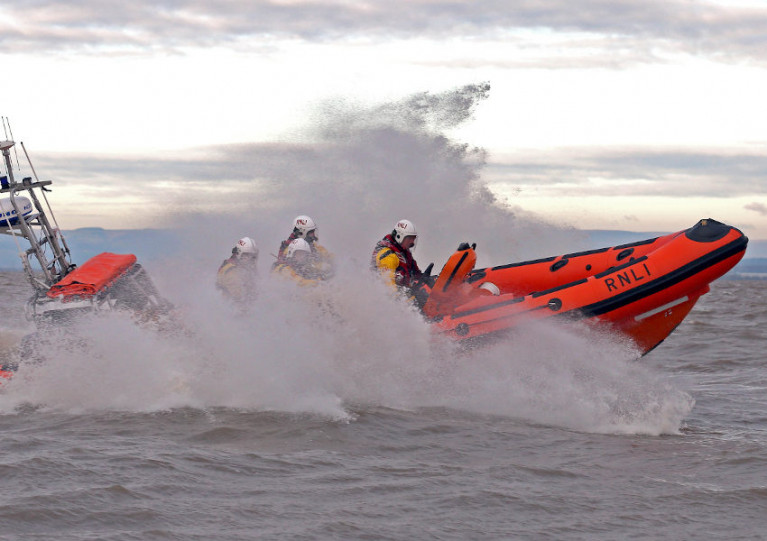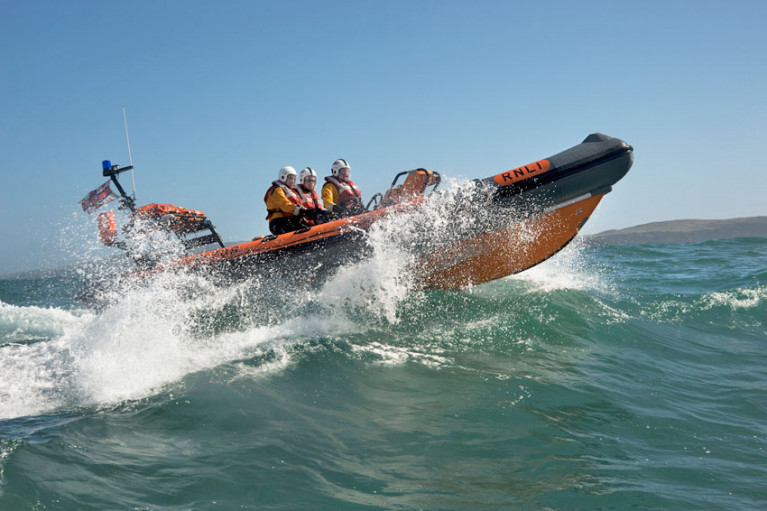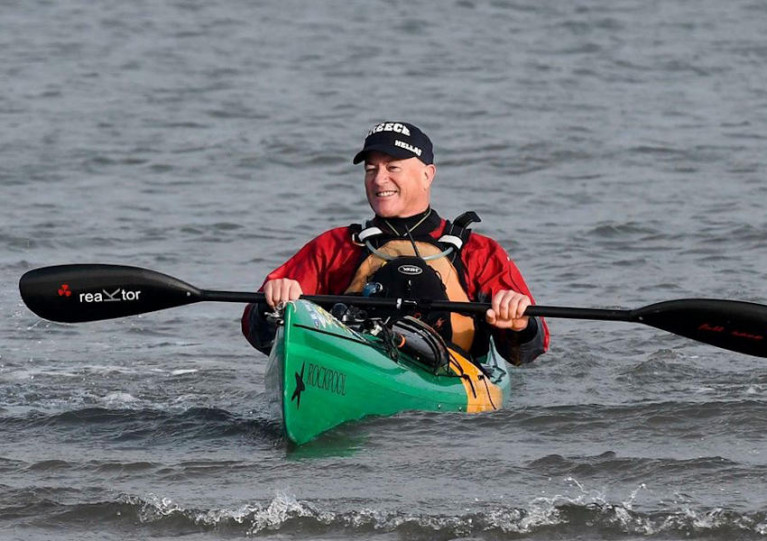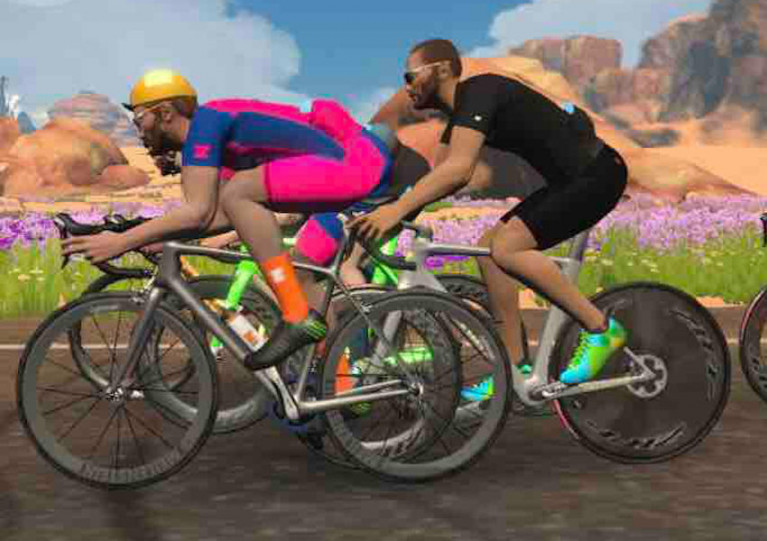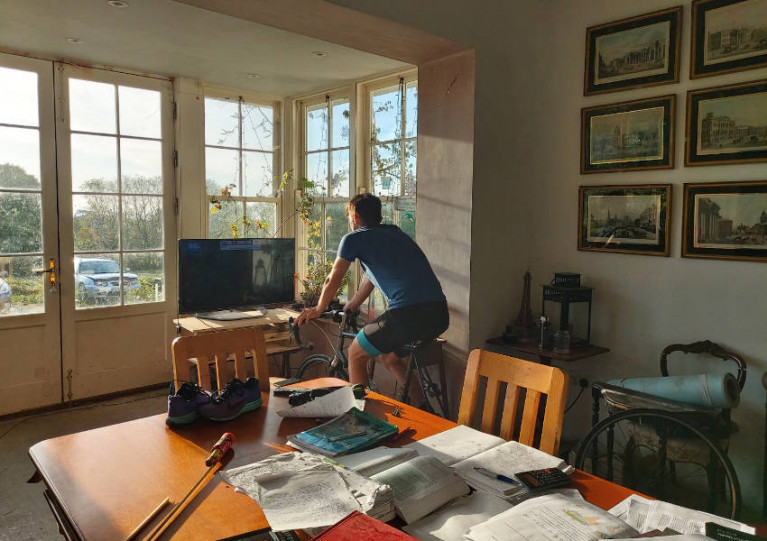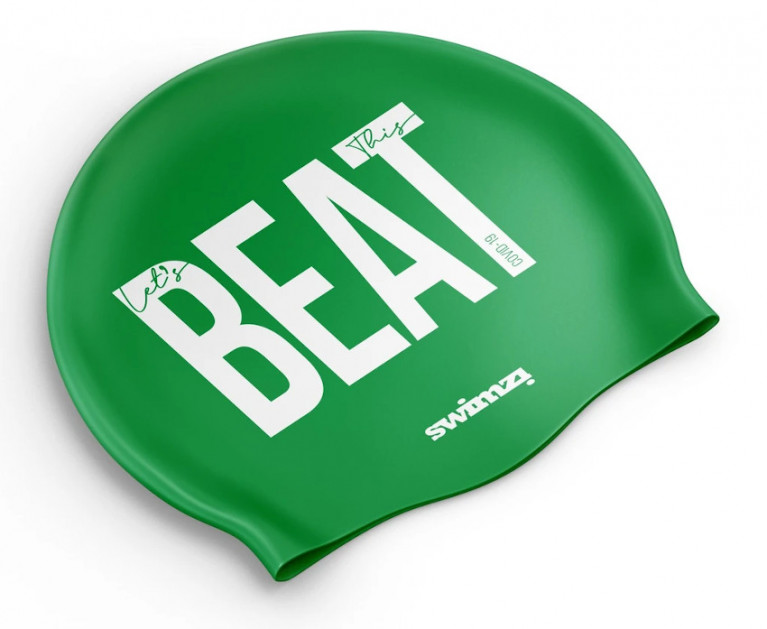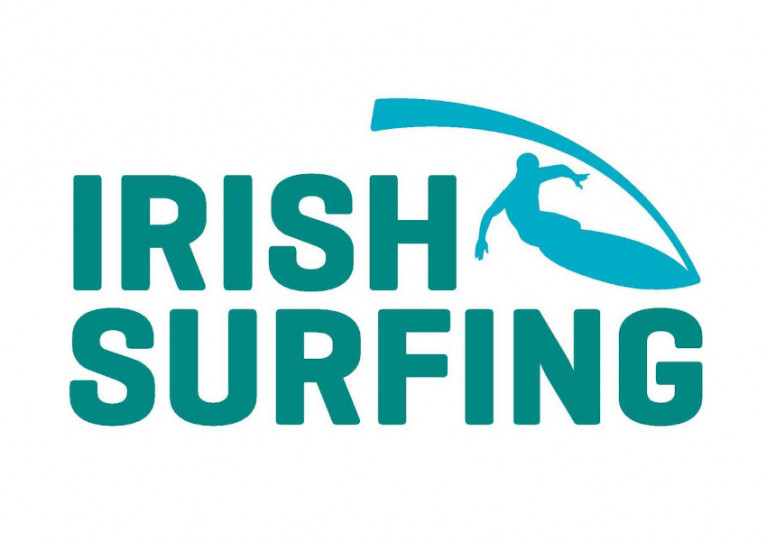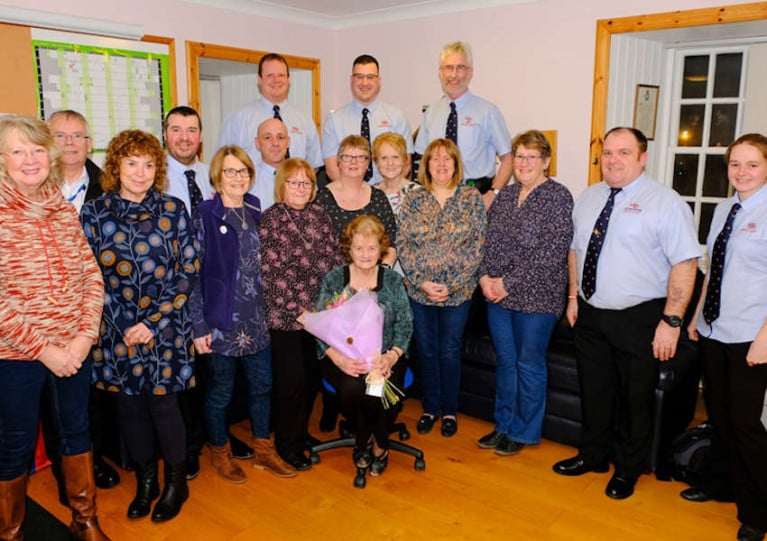Displaying items by tag: Fundraising
Join in with Marine Institute Staff on Virtual Festive North Pole Trek in Aid of RNLI
Staff at the Marine Institute are attempting to walk, run, row, cycle and swim the 4,068km distance from their headquarters in Galway to the North Pole in aid of the RNLI.
And they’re inviting everyone to join in and support their virtual festive fundraising challenge, which runs until Friday 18 December.
“Many of our colleagues and those that we work with spend much of their time at sea,” says Marine Institute chief executive Dr Paul Connolly. “Knowing that the emergency services are there should we need them is a huge comfort for all who use the ocean whether for work or for pleasure.
“This year has been difficult for many and especially hard also for charities such as RNLI Lifeboats Ireland. For these reasons, as an organisation the Marine Institute decided that together we could do our bit to support the RNLI and have a bit of festive fun while we are at it.”
It costs the RNLI €1,650 to train a volunteer lifeboat crew member for a year, and €1,764 to kit them out in their lifesaving gear — so every euro raised counts.
“We are asking the public to consider adding their kilometres to our fundraiser and making their steps or swims count. Together we can make this an easy downhill and raise much needed funds for RNLI lifeboats,” Dr Connolly adds.
If you want to take part, commit some kilometres to the 4,000km total or choose to donate. And don’t forget to post your challenge photos on social media, tagging the Marine Institute on Twitter or Facebook and using the hashtag #NorthPoleChallenge
Volunteers with Seal Rescue Ireland walked 117km — a kilometre for every seal the charity rescued last year — to raise much needed funds for their efforts last month.
As the Gorey Guardian reports, the ‘Seal Stride’ challenge took the place of their usual fundraising efforts amid the continuing coronavirus situation.
And the marine wildlife charity’s staff were joined by supportive members of the public walking, running or jogging to reach the 117km mark between them over the month of September.
“We were delighted to get people involved and track their own kilometres,” said Seal Rescue Ireland intern Amy Dodd, who came up with the initiative, “but tie it in to the fact that Seal Rescue Ireland is down 88% of funds compared to last year.”
The Gorey Guardian has more on the story HERE.
Lough Ree RNLI Launches Fundraising Drive For New Lifeboat Station
One of Ireland’s busiest lifeboat units is seeking the public’s help to upgrade its home base and carry on its lifesaving mission.
Lough Ree RNLI’s volunteers have been rescuing people from the lough’s 29km stretch of inland waterway since 2012, launching more than 370 times and helping over 1,060 people.
But despite their key role in water safety for the area, their lifeboat station operates from temporary shipping containers — and the unit urgently needs a new, purpose-built station with modern facilities for casualties, crew and craft.
“A new lifeboat station will make a huge difference to our lifesaving service here and in the local community,” said crew member Tom Bradbury.
“It will provide excellent training and changing facilities, and help us launch safety and efficiently every time. With you by our side, we can carry on our rescue mission.”
The crew are counting on public generosity to help them raise €100,000 towards cost of this new building at Coosan Point, which would be shared with the Inland Waterways Association of Ireland (IWAI).
And any funds raise above the €100,000 target will be used across all RNLI services, wherever they’re needed most.
Click HERE to donate to the Lough Ree lifeboat appeal. If you have any questions about the appeal, or would prefer to donate by phone, call the RNLI supporter experience team at 81 895 1877 (or 0300 300 9907 if calling from the UK) weekdays from 8am to 6pm.
Support The ‘Race To Raise’ For Baltimore Lifeboat
Two Baltimore women are running a virtual relay race around Ireland for their local lifeboat, after the annual charity walk was cancelled over coronavirus restrictions.
Anna Carthy and Odharnait Collins are now on day three their ‘Race to Raise’ in aid of Baltimore RNLI, in which they and other participants are getting out and about for a walk, run, swim or cycle and adding up their distances.
At the end of day two yesterday (Monday 13 July), the group has already totalled hundreds of kilometres — the distance from Baltimore to Wicklow anti-clockwise around the coast.
And the organisers have raised more than €600 awards their €1,000 goal for the local lifeboat service.
“Covid-19 restrictions have had a huge impact on our annual fundraising events for Baltimore lifeboat with many events having been cancelled,” said Carthy and Collins.
“We have been thinking how we could run these events virtually, whilst obeying these restrictions, and so have moved our annual lifeboat walk online this year.
“Please help us walk the distance around Ireland from station to station to create awareness and raise money for this vital service.”
For more details see the ‘Race to Raise’ page on Facebook and the fundraising page on GoFundMe.
Sea swimmer and experienced kayaker Kevin O’Sullivan has presented Skerries RNLI with a donation of €1,200 from monies raised while kayaking solo around the island of Ireland.
Kevin’s three-year venture started in 2016 and was spurred by his love of kayaking.
“After over 35 years of kayaking, looming large in front of me was my own personal edge,” he explains of his decision to embark on the solo circumnavigation.
“I had been operating as a volunteer kayak instructor with Skerries Sea Scouts for seven years. Being inspired by the courage of the many junior paddlers within their ranks, I decided it was high time I ventured outside my own comfort zone as this mission materialised out of the faintest whisper of a long-held dream I had thought about for years.”
During the planning of the trip, Kevin said he was aware of the work done by volunteers at his local RNLI station in Skerries, and Medicins Sans Frontiers in the Mediterranean.
“I decided to put a charity element to my venture. Monies raised were split down the middle and shared.
“My local involvement with The Frosties, a year-round sea swim group, gave me first-hand knowledge of the very critical service the RNLI offers to all water users. We have availed of their service on a few occasions.
“I am not alone in complimenting their non-judgemental approach to any rescue they carry out. It is wonderful to give something back to this great organisation.’
Kevin’s circumnavigation was all the more remarkable in that he achieved it in his spare time, committing to the adventure for almost three years.
“I would kayak a stretch over a few days, camping as I went, depositing my kayak with a helpful soul, whilst returning home to family and work for a period.
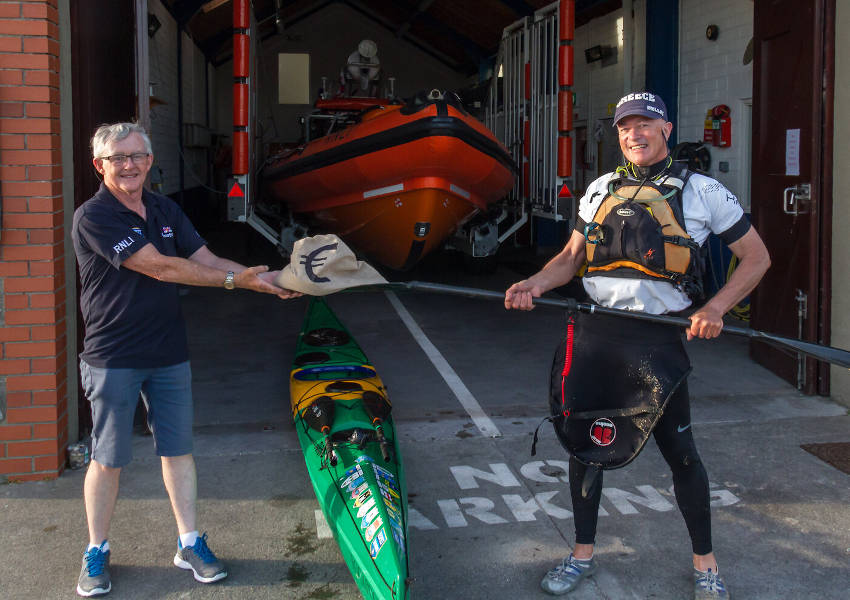
“When the next favourable weather window opened coincident with my time off work, I would return to my boat continuing along the coast, all the while eating away at the total distance of 1,750 km to put me back into Skerries where I started.”
First circumnavigated in 1978 by a three-man team, around 100 have now completed the trip, mostly in small groups.
“Only 25 of these have been solo. Mick O’Meara, from Waterford, holds the record at 23 days, and was my own personal inspiration for the trip.”
Kevin says he wasn’t sure he could “stomach” the challenge due to his propensity for sea sickness, but the story of Mick O’Meara kept his spirits up.
“Thankfully I was graced with good weather, great support and my body held out so that after three summers, my kayak found itself being slid back onto its rack after a 903-day absence.”
Kevin recalled of his achievement: “I camped, B&Bed, was put up by strangers, slept in adventure centres, friends’ houses and hostels. I used planes, trains and automobiles to get to and from the remotest corners of this island to complete my paddling project.
“Once, in fact, I walked two-and-a-half kilometres on the Hook Peninsula to get to my B&B from the beach I landed on, back in November 2017. The proprietor, who very kindly reopened his B&B for me, stood shocked when I rolled my 18ft long kayak up his driveway rather than atop my car.”
Gerry Canning, volunteer lifeboat press officer for Skerries RNLI, commended Kevin for his fundraising efforts on behalf of the station.
“This was a phenomenal effort with an amazing amount raised for Skerries RNLI and we want to say a huge thank you to Kevin. With so many fundraising events cancelled this year, donations like this are even more crucial.
“We can really feel Kevin’s pride for what he has achieved and his enthusiasm for helping the charities he donated to. These funds are very much appreciated by all here at Skerries and will help us to continue to save lives at sea.”
Round-Ireland Virtual Cyclists Raise Over €7,700 For RNLI As They Eye The Home Stretch
Four Dun Laoghaire-Based 29er sailors have raised more than €7,700 for the RNLI in their virtual cycling challenge.
Last weekend, the quartet of Max Goodbody, Nathan van Steenberge, Sam Ledoux and Tim Norwood — along with their coach Thomas Chaix — took on the epic round-Ireland route on stationary bakes in their own homes.
In just over a week the team have covered a total of 1,700km — and that’s all the more impressive considering they’ve been fitting in biking sessions around their school work.
Along the way they’ve been joined on various legs by fellow 29er team member Leah Rickard, Finn sailor Oisin McClelland, Laser Radial challenger Aoife Hopkins and Olympic silver medallist Annalise Murphy.
But as they enter the home stretch and the remaining 360km to Dun Laoghaire tomorrow afternoon (Tuesday 19 May), the pressure will be on as they will be joined by Dublin-based former pro cyclist and current super coach Matteo Cigala.
Cigala’s 20-year professional career included junior participation in the World Championship representing Italy and stand-out performances for many years in Ireland’s An Post Ras.
As a coach, he supported Greg Swinand in his two successful Irish hour record efforts. He is the founder and head coach of Cigala Cycling and current head of athlete performance at Ireland’s only professional cycling team, EvoPro Racing.
For more on the team’s endeavour and how to support their efforts, see the GoFundMe page HERE.
Four Dun Laoghaire-based 29er sailors and their coach have started their own ‘virtual cycling’ challenge in aid of the RNLI.
Max Goodbody, Nathan van Steenberge, Sam Ledoux and Tim Norwood, along with coach Thomas Chaix, have taken on the epic route via every lighthouse around the island of Ireland — but covering the distance on stationary bikes in their own homes.
The team aims to complete the 2,000km route — with 14,000 metres of climbing — in 11 days while raising funds for the charity that saves lives at sea.
Since starting on Saturday 9 May, they have already covered the distance from Dun Laoghaire to West Cork — and that’s around their home school commitments, too.
Already exceeding their initial target of €2,000, the team have so far raised over €5,000 to keep the RNLI afloat in uncertain waters.
And as they go on they will be joined by an Olympian and former Olympian for various parts of the ride — with rumours of some other big names set to tag along.
“All of us are sailors and appreciate the work of the RNLI, and understand how dangerous and unforgiving the sea can be,” the team said.
“We are thankful for the bravery of the lifeboat volunteers who go out and risk their lives for others in all weathers. It would mean a lot to us if you could support us in this project.”
For more on their endeavour and how to support the team, see the GoFundMe page HERE.
‘Let’s BEAT This’ With Viking Marine’s Swim Cap Fundraiser For Frontline Health Workers
Viking Marine has teamed up with athletic sportswear brand Swimzi in the global effort to help fight Covid-19 and to support our frontline workers at the HSE.
You can show your support by purchasing a charity ‘Let’s BEAT this’ swim cap. All profits will go locally to St Micheal’s Hospital in Dun Laoghaire and to Beaumont Hospital, where the daughter Viking Marine MD Ian O’Meara is currently part of the medical team on the frontline.
As of lunchtime today, Sunday 26 April, already a tenth of the modest target of 300 caps have been purchased.
And be sure to join in the #SwimziCapChallenge and post video tagging Viking Marine’s Facebook and Instagram pages of your attempts to break the record of putting on 17 swim caps in 30 seconds!
Irish Surfing Launches Crowdfunding Campaign For Live Scoring Display
Irish Surfing has launched a crowdfunding campaign to purchase a live scoring system for competitive events.
The national governing body for surfing in Ireland is already nearly a third of the way towards the €6,000 goal for the priority display system.
Junior and senior competitors, spectators and race officials alike would benefit from this effort to professionalise its delivery of events, Irish Surfing says.
All funds raised will be administered through Irish Surfing’s Sligo base with a view to purchasing and training staff with using the system over the coming months.
Lerwick Lifeboat Guild Fundraising Volunteer Steps Down After 38 Years
Bella Irvine has retired from the Lerwick Ladies Lifeboat Guild after 38 years service, since first volunteering for the Shetland Islands RNLI unit in 1982.
At a gathering at RNLI Lerwick lifeboat station to mark the occasion last Tuesday evening (4 February), members of the guild and current lifeboat crew members paid tribute to Bella’s contribution on the committee.
After her first 10 years, Bella was then treasurer for 23 years, from 1992 until 2015. Since then, she has continued to support fundraising events and activities, including volunteering in the RNLI Lerwick shop.
In recognition of her long service, Bella received a RNLI Gold Badge and Bar in 2016.
The guild raises funds for the RNLI towards the operational costs of the Lerwick lifeboat in Scotland's far nothern isles, which relies entirely on public donations.
‘She’s one in a million and will always be welcome in our shop, where she will always find the kettle on’
Throughout the year, the guild organises many events, including the popular Lifeboat Open Day in midsummer and the Lifeboat Ball later in the year. Committee members also attend country shows during the summer months to generate income and to raise the profile of the RNLI.
In 2019, the Lerwick Lifeboat Guild, including funds raised by the men’s committee, raised a total of over £44,000.
Rhoda Watt, joint chair of the Lerwick Ladies Lifeboat Guild and current treasurer, said: “Bella has been absolutely dedicated beyond measure and will be missed on our committee. She’s one in a million and will always be welcome in our shop, where she will always find the kettle on.”
Malcolm Craigie, RNLI Lerwick lifeboat operations manager, said: “The RNLI relies on dedicated fundraisers across the country to provide equipment and training for our volunteer crews, so that we’re ready to respond 24 hours a day.
“On behalf of the lifeboat crew, we’re hugely grateful to Bella for everything she has done for the Lerwick Lifeboat Guild over the last 38 years.”


























